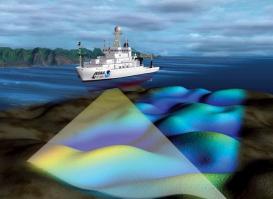Humans have had a long but limited relationship to oceanic depths. Fishing and diving for pleasure or to gather resources were among the main points of contact with oceans and seas beyond the surface. Fathoming depths by sight and with sounding lines made navigation in shallow waters possible. Surveyors improved this technique at the height of the British Empire, and then as part of the efforts to lay submarine telegraph cables across the Atlantic.
As other historians have shown, the introduction of underwater acoustic technologies in the late nineteenth century rapidly transformed those traditions. European and American researchers soon adapted microphones to water by attaching vibratory metal diaphragms: hydrophones transduced water mechanical waves into sounds that humans could hear without getting wet. As German U-boats added the third dimension to naval warfare, the Great War triggered a wave of innovations in underwater acoustics. In the next hundred years, human knowledge of the deep oceanic environment and ability to operate there turned the ocean into an environment for human navigation, exploration, extraction, and destruction.
What does it mean for an environment to become human? What phenomenological, epistemological, and ontological transformations of the maritime space have coevolved with the sonification of the oceans? How have human ears adapted to the underwater realm, and what sorts of relationships with underwater sensing technologies have been created? What specific sonic qualities have conditioned our knowledge of different oceans? These are some of the questions guiding this project at the crossroads of the history of sound and acoustics, the history of oceanography, and the history of oceans themselves.

